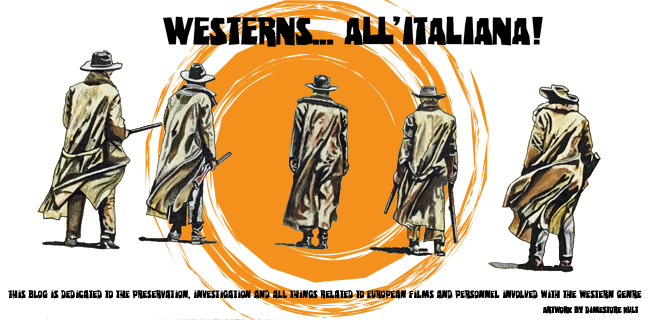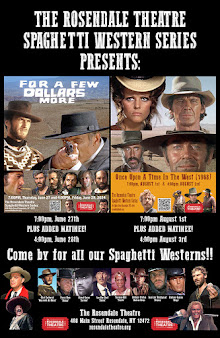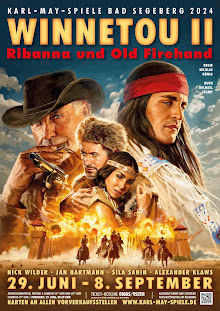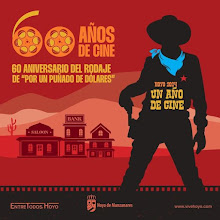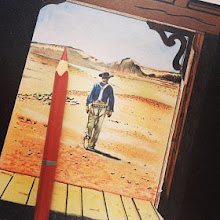Thursday, October 31, 2019
New Book Release "Morricone"
Morricone
Author: Maurizio Baroni
Country: Italy
Publisher Lazy Dog Press
Language: Italian
Pages: 368
ISBN 978-88-98030-30-9
Available: October 1, 2019
The first major work dedicated entirely to the
cinematographic discography of the master Ennio Morricone. Unique of its kind,
it was born from the idea of the collector, author and cinema expert Maurizio
Baroni, who draws from his own boundless archive to give life to a large review
that covers over 50 years of prestigious career, largely unpublished, which
includes handwritten scores by the maestro, album covers of the
soundtracks and much more.
Morricone
Author: Maurizio Baroni
Country: Germany
Publisher Ginko Press
Language: English
Pages: 351
ISBN10 3943330338
ISBN13 9783943330335
Available: October 31, 2019
Unique in its genre, Ennio Morricone: Discovery
originates from the idea of the collector, author, and cinema expert Maurizio
Baroni. Baroni draws on his own archive to give life to a rich selection
highlighting over fifty years of a prestigious career, largely unseen before,
which includes handwritten scores by the maestro himself, the original album
and single cover sleeves from his soundtracks, and much more. This book is a
definite homage to this great Italian composer of film soundtracks, probably
the most famous in the world. Texts included by: Dario Argento, Bernardo
Bertolucci, Liliana Cavani, Lisa Gastoni, Franco Nero, Quentin Tarantino, and
many more.
European Western vs. American Western (Part 1)
By Alireza Vahdani
Introduction
This essay is concerned with some of the major elements
that distinguish Italian westerns [1] from Hollywood westerns. A Fistful of
Dollars (1964, dir. Sergio Leone) epitomises a cinematic matrix where all these
differences are manifest. This film is not the first Italian western, so why is
it being considered as the main cinematic text for this writing? Two reasons,
invoked in the quotes below, are its generic innovations and its unexpected
financial success:
1. Peter
Bondanella (1996, p.255) writes: “much of the impact of Leone’s first western
was generated by its conscious departures from what had come to be known as the
‘classic’ western formula.” Moreover, Thomas Weisser cited in Paul Cooke’s
Dialogues with Hollywood (2007, p.179) argues that “the movie (A Fistful of
Dollars) is responsible for the popularity of the Spaghetti [2] western genre.
It set a standard, designed a roadmap for a violently nihilistic cinematic
style that dramatically separates Euro westerns from the Hollywood variety.”
2. Cooke (2007,
179) writes that “A Fistful of Dollars was an enormous box-office success,
taking more money than any other Italian film to that date and reinvigorating
the Italian film industry.”
Hence the combined force of the film’s box-office clout,
which ensured the continuity of the Italian western, and its artistic impact,
made the European western a cinema worthy of scrutiny by scholars and critics.
This essay will first identify and then examine four
fundamental differences between American and Italian westerns.
The effects of
Italian neo-realism
Although Italian westerns are popular films, they are
nevertheless affected by some of the conventions of a less popular group of
films, Italian neo-realism. This is not to say that the Italian westerns are
pure artistic pictures which try to manifest the socio-political issues of
their day and rekindle the consciousness its people. On the contrary, these
films were entertainment vehicles aimed at providing audiences with a break
from the reality of everyday life.
The first aspect that recalls neo-realism is the use of
(on-location) sets. In the opening minutes of A Fistful of Dollars, the
audience observes the man with no name, Joe (Clint Eastwood), entering the
border town of Saint Miguel (shot in the desert regions of Almeria, Spain). The
town, although populated, is depicted as a ghost town. The emptiness of the
streets portrays the total lack of all concepts that make relations between
humans dynamic: love, respect, humility, sacrifice, understanding and above
all, law. The sets contribute immensely to this portrayal by being simple and
white, like the pale face of the dead person who rides horse back into the town.
It can also be said that this whiteness is a façade concealing the dark side of
a town destroyed and corrupted as the result of gang wars.
In addition to the sets, the realistic make-up of the
characters is also borrowed from neo-realist cinema. In both cases, the make-up
is not solely an artistic attempt to present a character’s appearance, but a
medium for encoding a message that goes beyond character: the unshaven, dirty
and sunburnt faces of the characters illustrating the brutal environment which
envelops them. Frayling (2006, p.126) explains the source of this realistic
view by writing: “Leone often bases his characters’ appearance on nineteenth
century photographs.” Joe is a handsome man, but this beauty is distorted by
the make-up. In contrast to this, in the American westerns of John Ford or
Howard Hawks, no matter how unfavourable the situation, the characters still
have time for a shave and bath –that is, they look tidy and clean. This
smartness represents the idealistic nature of a strong and tough American
subject; Americans like to see their heroes well-groomed.
The above visual elements suggest that the content and
philosophy of A Fistful of Dollars can be read in neo-realist terms. The main
similarity is that in both cases the characters are trapped by their lives.
Leone in Frayling (2006, p.131) says that his characters are inspired by the
characters of Sicilian theatre because they are “working within a fairly
restricted margin.” However, the representation of ‘being trapped’ differs in
westerns and neo-realist films. In the latter, the characters initially do
their best to change the situation, but to no avail; they barely survive. On
the other hand, in Italian westerns the environmental conditions of the
characters are so cruel and unpleasant that they cannot expect any form of
survival. They either succeed entirely, or lose it all.
It is due to the above doctrine that ‘money’ is so
important in these films. According to Frayling (2006) and Cooke (2007), if in
the case of American westerns money is a tool or way for reaching a higher goal
(a woman’s love, helping others, escaping a hard life), in Italian westerns it
is the ultimate objective. Frayling (2006, p.51) explains this idea as such:
“The ‘hero’ does not spend his dollars: he treats them strictly as ‘prize’, as
‘something that must be grabbed before the next man reaches them.’ ” In the
case of A Fistful of Dollars, Leone encodes this message to the audience by
keeping them in the dark about why Joe needs all the money. From what we can
gather, there are other people who need the money more than him. Even Ramón
(Gian Maria Volonté), the antagonist, can be said to deserve the money more
than Joe because he is in charge of a large gang. Nevertheless, by observing
that one person has all the money at the end, viewers can infer that when a
society is in trouble, those who can stand for themselves will survive.
[To be continued]
Special Birthdays
Steve Emerson
(actor) is 85 today.
Carlo Pedersoli
(aka Bud Spencer) (actor) would have been 90 today, he died in 2016.
George Catlin
(actor) is 70 today.
Subscribe to:
Posts (Atom)
